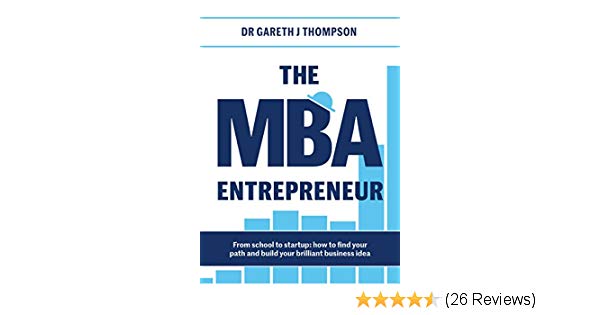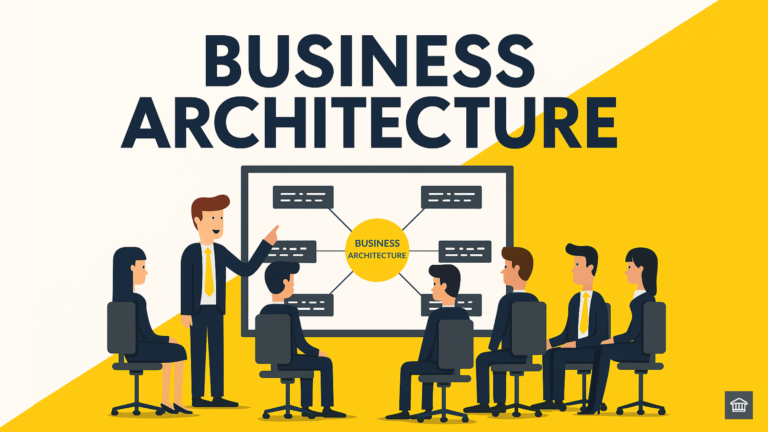- Business Design
- Problem Solving
- Communication Skills
- Business Change
- Business Strategy & Planning
Misconception #1 - Skills
But first, let’s this clear up a couple of misconceptions – skills is thought of all wrong, as well as Business Transformation for that matter.
First – skills.
Skills is typically thought of as either hard or soft. You need soft ‘people’ skills, or hard ‘technical skills. Well that’s not entirely true.
That old way of categorizing skills is broken – soft and hard skills categorisations doesn’t tell us enough.
This is like the Business Model Canvas (BMC). The BMC is good to tell you the nine (9) elements, according to the creator of the BMC need to consider for a business’s business model. It doesn’t tell you enough. It goes tell you the hardest part of any business model – and that is how do you implement it.
The devil is in the detail – in implementation.
The same can be said for skills – soft skills and hard skills tells us part of the story, but not the full story. To better understand skills, we need to get specific, there are actually not two (2) types of skills – but four (4):
We will discuss the four (4) types of skills – Technical, Business, People and Leadership skills.
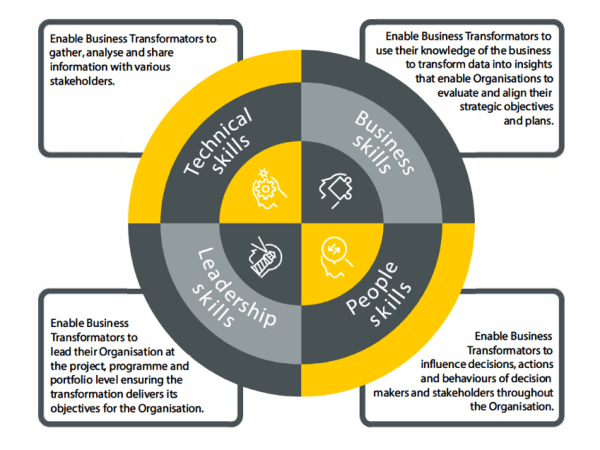
- Technical Skills – enable Business Transformators to gather, analyse and share information with various stakeholders.
- Business Skills – enable Business Transformators to use their knowledge of the business to transform data into insights that enable Organisations to evaluate and align their strategic objectives and plans.
- People Skills – enable Business Transformators to influence decisions, actions and behaviours of decision makers and stakeholders throughout the organisation.
- Leadership Skills – enable Business Transformators to lead their Organisation at the project, programme and portfolio level ensuring the transformation delivers its objectives to the Organisation.
Misconception #2 – Business Transformation
The next misconception is Business Transformation, and that misconception is that Business Transformation is all about deliverables, or specifically colourful presentations and documentation. It’s not.
If it were, all those “war rooms” I have seen, been bought into, and had to pull down (because they were useless aka ‘expensive shelfware’ – I wrote about this in my book), if they were any good, there shouldn’t be a 70% failure rate in transforming business.
Yes, you need a business-led structured agile transformation framework that helps you manage the process (that’s where HOBA® comes in), but it is the ‘skills’ of the Business Transformator to manage that process, and work with the Business to understand their needs and concerns, and work collaboratively together to develop and oversee the implementation of their Target Operating Model (TOM) as part of their business transformation.
So, what are those skills exactly?
Those skills – that every Business Transformator needs to make your Business Transformation successful across the Technical, Business, People and Leadership areas are discussed below:

We will discuss each of these skills below:
Business Design
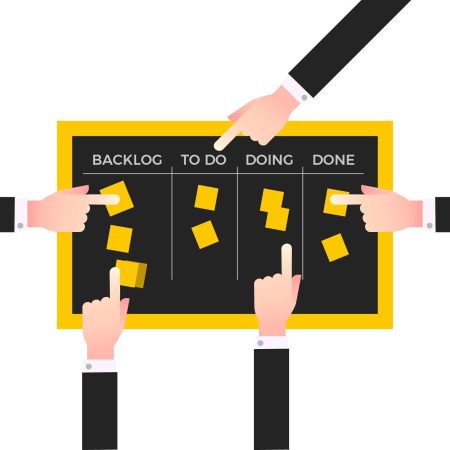
The first competency is Business Design. Business Design is about developing not just an effective business model, but an effective business.
Business Design Competency is very relevant, particularly for any organization looking to build a scalable business.
Business Design Competency is very relevant, particularly for any organization looking to build a scalable business.
Heath Gascoigne Tweet
- Business Modelling – the ability to abstract concepts and representations of real world and business situations into models to support business strategy planning and implementation.
- Business Analysis – the ability to take an analytical approach from researching and evaluating of business problems and opportunities to identifying and finding solutions.
- Business & Enterprise Architecture – the ability to apply structured architecture approaches to align business and technology with organisation goals.
- Organization Design & Implementation – the ability to apply business structural and systematic design and implementation to enable Organizations to deliver its products and services to its customer effectively and efficiently.
- Requirements Management – the ability to manage requirements and traceability from concept at various levels of the organisation from CXO to Ops to implementation from start to finish.
Problem Solving
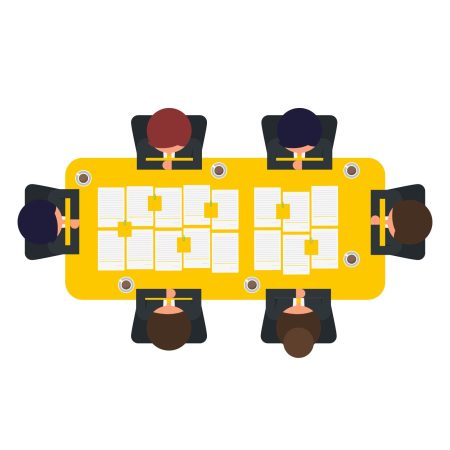
- Decision-making – the ability to understand the necessary criteria involved in making a decisions, make decisions and assisting other to make (better) decisions.
- Analytical Thinking – the ability to resolve complexity using a systematic approach, breaking large complex problems into manageable chunks.
- Systems Thinking – the ability to understand how the people, process and technology within and outside the Organisation interact in relationships and patterns to create a system as a whole, and understanding and anticipating that one change in one part of the system has knock on effects in other parts.
- Creative Thinking – the ability to think outside the box, come up with fresh perspectives, innovative, breakthrough ideas and new paradigms that challenge status-quo and create value in the marketplace.
- Risk Management – The ability to plan and implement organisation-wide processes and procedures to manage risk especially in the design and implementation of the organisation’s target operating model.
Communication Skills

- Leadership – the ability to be effective in both formal and informal leadership roles, in order to guide others in the analysis, design, delivery and implementation of the organisation’s target operating model and through their transformation journey.
- Teamwork – the ability to work together with others in projects and processes; listen to and seek information from others; shares skills and expertise; is an active member of the team; acts without prejudice, and puts own agenda to one side in order to work to achieve team goals.
- Teaching & Coaching – the ability to teach and coach others by being able to effectively communicate issues and requirements to their team and stakeholders in such a way the information communicated is understood, retained and acted upon.
- Facilitation – the ability to facilitate interaction between stakeholders to come to agreements, resolve disagreements, to reach decisions and conclusion, impart knowledge in order to progress the work and implementation of the Organisations business transformation.
- Presentation – the ability to present – in written communication, oral expression, presentation & listening, able to explain complex concepts and issues simply and accurately in a level of knowledge and provide information in a way the user will understand.
To be an excellent communicator, your Business Transformator must watch out for the unseen contextual influences, such as cultural, organisational and social factors.
Heath Gascoigne Tweet
The next essential competency your Business Transformator needs is Business Change.
Business Change

- Stakeholder Management – the ability to systematically identify, analyse, manage, monitor and improve stakeholder relationships in order to communicate to and with them, addressing their communication needs in order to gain their support (or reduce their resistance) to the change.
- Customer Focused – the ability to take a customer-centric approach, to ensure the Voice of the customer is considering in the analysis and design of the organisations transformation to satisfy its clients and to deliver an excellent customer experience.
- Project Management – the ability to systematically develop and implement the organisations business transformation to meet identified business needs within the agreed time, cost and quality constraints.
- Change Management – the ability to effectively identify, manage, initiate and influence change, and manage and support others through it.
- Benefits Management – the ability to assist the Organisation to identify, quantify and prioritise business benefits, business changes and technology enablers, and plan to monitor the realisation of the benefits long after the transformation project team and stakeholders has gone.
Business Strategy & Planning

- Visioning – the ability to develop a clear shared vision for the future of the Organisation, maintaining a long-term big-picture view, identifying opportunities and anticipating and solving problems and obstacles along the way.
- Direction & Goal Setting – the ability to set and communicate goals, standards and performance expectations in an open, straightforward and easily understandable way.
- Knowledge Management – the ability to systematically identify and manage vital information that create value for the organisation by capturing, sharing, developing & exploiting the collective knowledge to improve performance, support decision making & mitigate risk.
- Strategic Planning – the ability to identify the means and methods available to the Organisation to achieve its Vision, make and align the organisational actions, plans & resources with business objectives to achieve its Vision.
- Consultancy – the ability to provide advice, guidance and recommendations, through understanding client and business requirements, data collection and analysis, problem resolution, option evaluation and recommendations to address client needs and strategic business objectives.
The importance of Business Strategy & Planning Competency is that, it is the backbone of any successful Business Transformation.
Heath Gascoigne Tweet
Without a clear shared Vision, and realistic goals to get there, communicated in a way that the Organisation can relate to and own, the transformation will fail to get traction, and lead to failure. The key to success Business Strategy & Planning competency implementation, is making sure your Business Transformator has the necessary training. For schedule of the upcoming Business Transformation Masterclass, see the upcoming events here.
The above contains extracts of one of my two forthcoming books (as part of my forthcoming PhD) – The Transformation-Driven Organisation® – A Practical Guide to Developing a High Performance Business Transformation Capability.
Thank you for reading this, hope you found a lot of value in it!
Sincerely,
Heath Gascoigne
P.S. If you want to join our Business Transformator community of like-minded Business Transformators, join the community on the Business Transformator Facebook Group here.
P.P.S. If you want to learn more about business transformation, check out The Business Transformation Playbook here.
For more information, visit https://www.hoba.tech







